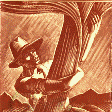Nebraskiana: Resources and Materials on the 37th State
Date of this Version
1969
Abstract
What is the Nebraska "Unicameral" experience in handling problems relating to organization, procedure, leadership, and lobbying? Has the Nebraska system attracted different kinds of people to legislative service? This study was undertaken for the purpose of determining, on the basis of an investigation of the only one-house state legislative system in the nation, how Nebraska unicameralism functions in present-day circumstances and if the Nebraska experience has produced evidence of alternative ways of dealing with contemporary legislative problems which would tend to bear out the expectations of the supporters of the single-house legislature. Because the Nebraska unicameral plan employs an important feature that is not inherent in unicamerali3m-- nonpartisanship in the election of the members and organization of the Legislature--there are some limitations upon using the Nebraska Legislature as an example of the unicameral system in comparison with bicameralism. However, comparisons with other state legislatures is necessary for a meaningful examination of the Nebraska system, but conclusions drawn from the comparisons which do occur must allow for this added factor in Nebraska unicameralism.
This study is not conceived as a study of the entire legislative process in the sense defined by Jewell and Patterson as "movement in the legislative system from one point in time and space to another. This study is focused on the legislative branch of Nebraska government, on the features which distinguish this institution from that of other states--the Single chamber and nonpartisanship--as well as on the organizations and procedural features common to American state legislatures in general.


Comments
Submitted to the Department of Political Science and the Faculty of the Graduate School of the University of Kansas in partial fulfillment of the requirements for the degree of Doctor of Philosophy. [1969]